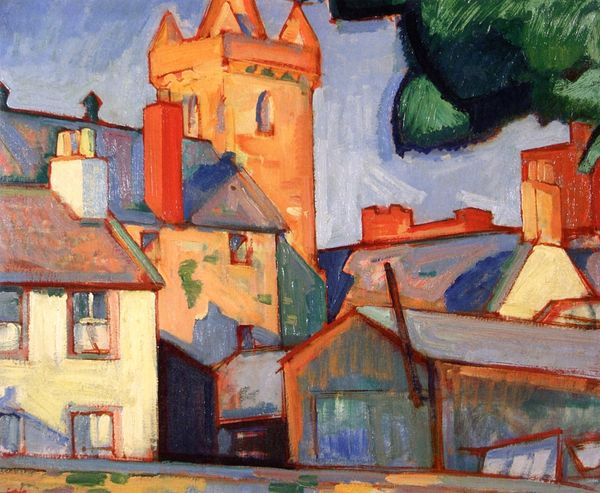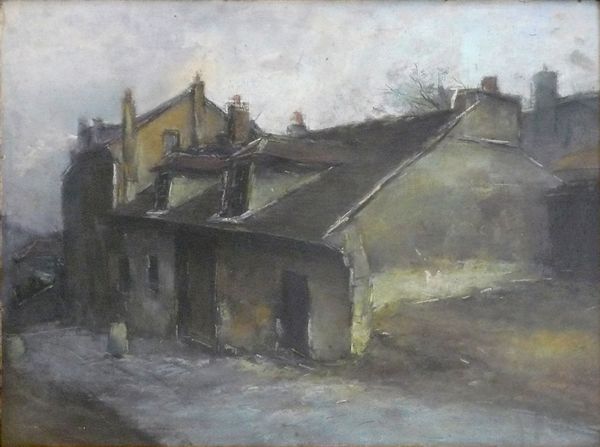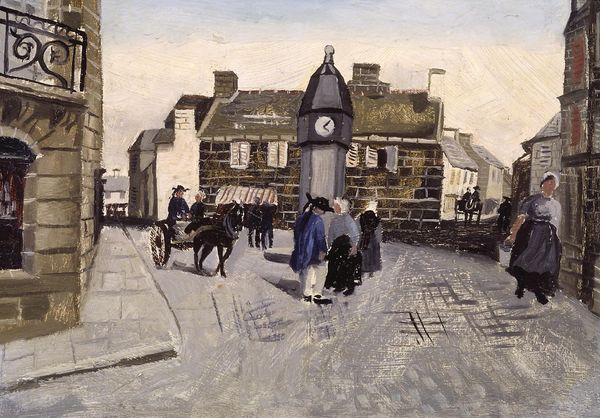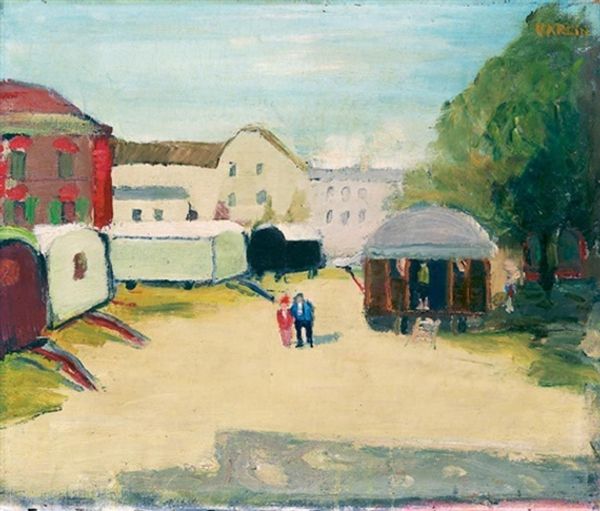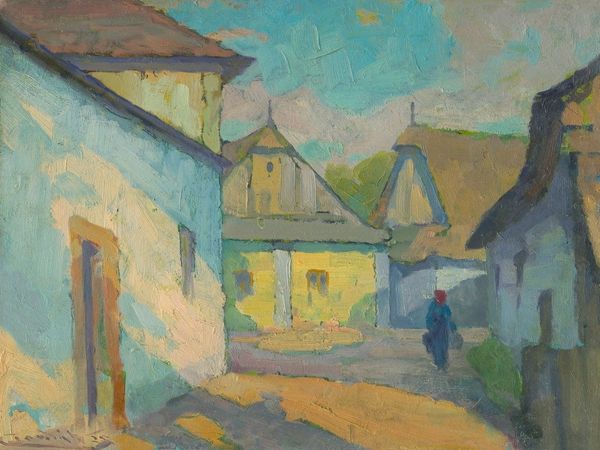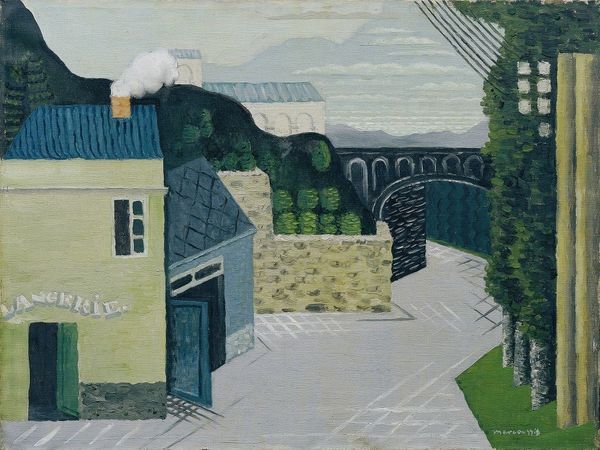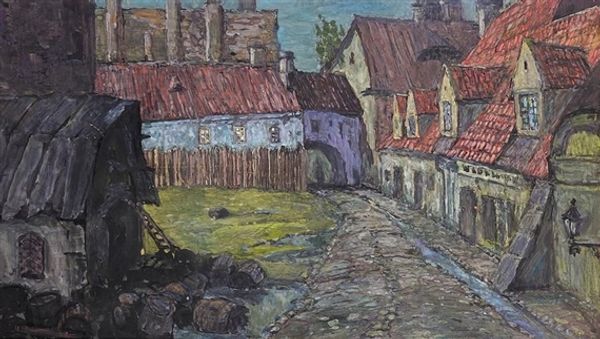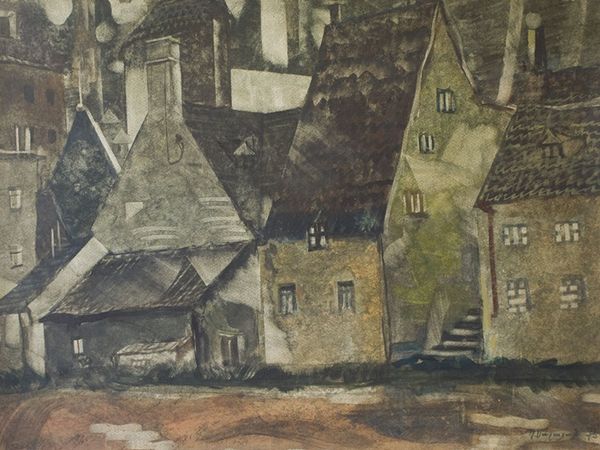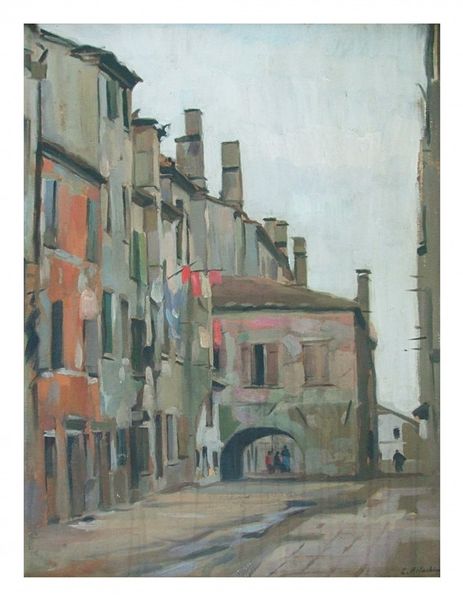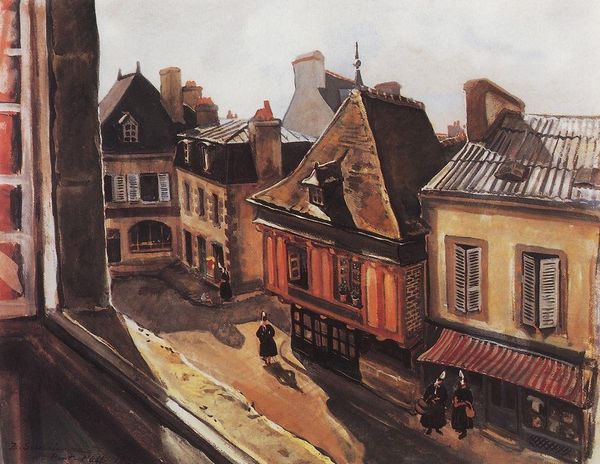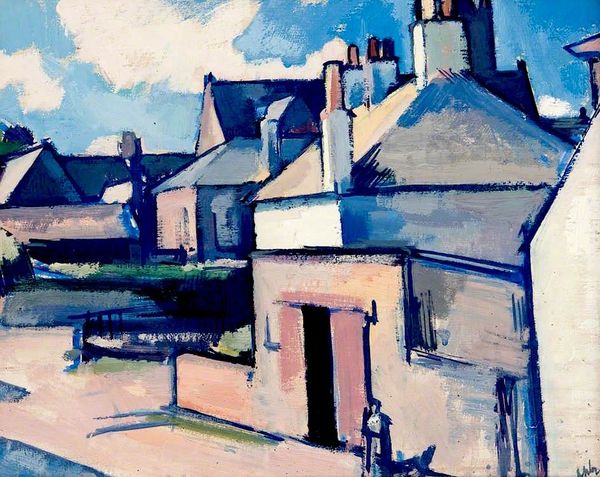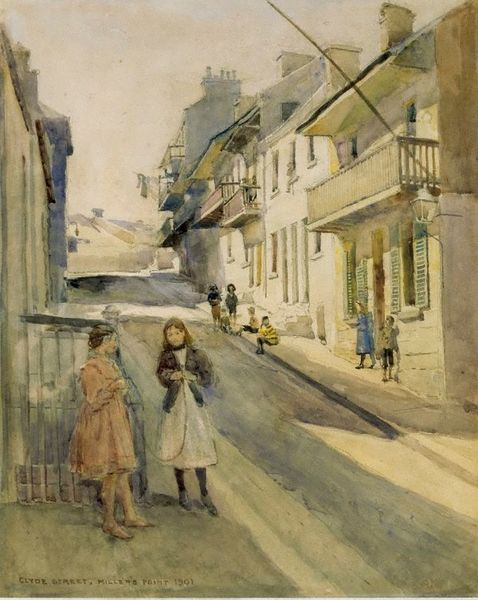
painting, oil-paint, impasto
#
painting
#
oil-paint
#
landscape
#
indigenism
#
impasto
#
cityscape
#
watercolor
#
realism
Copyright: Bui Xuan Phai,Fair Use
Editor: This is Bui Xuan Phai's "(Ancient Hanoi Street)", an oil painting. I get a sense of a place steeped in history, but also slightly faded, like a memory. What are your initial thoughts? Curator: It's interesting you say that. Bui Xuan Phai painted Hanoi repeatedly, often focusing on the city's aging architecture. He produced it under particular political circumstances; during the socialist realism period in Vietnam, there was state pressure for artists to depict idealized versions of life. Bui Xuan Phai chose to paint the older parts of Hanoi instead, hinting at the costs of modernization. Notice the crumbling facades; what do those suggest to you? Editor: That it is about resilience maybe? Even with parts that need repairing it remains standing. But the modern electrical post hints that the times are changing. Curator: Precisely. It creates tension. Phai was walking a fine line. He uses 'realism' but it’s definitely a selective, even melancholic, realism. The tones are muted. He focuses on specific architectural elements instead of ideal representations of people. It challenges what was considered appropriate subject matter and artistic style at the time. Do you think his choice to paint this reflects an artistic commentary on urban life? Editor: I think it definitely offers commentary, maybe even a subtle critique of how rapid changes might impact local history. He shares the feeling that progress does not come without a sacrifice of cultural heritage. Curator: Exactly. His paintings gave a voice to aspects of Hanoi life that were largely ignored in official art. He shows that cities are never just about new construction. It is a vibrant layering of histories! Editor: I never would have looked so deeply into a city-scape before, especially considering the socio-political implications. This makes me reconsider how to approach even seemingly straightforward art. Curator: It highlights the fascinating intersection of art and social history and encourages questioning how politics, power, and public image influence what gets created and how we respond to it.
Comments
No comments
Be the first to comment and join the conversation on the ultimate creative platform.
